Forums › Laser Treatment Tips and Techniques › Hard Tissue Procedures › Osseous Erbium Crown Lengthening
- This topic is empty.
-
AuthorPosts
-
SwpmnSpectatorAs Dr. van As mentioned in his osseous recontouring case today, I too wrestle with the notion of open vs. closed osseous procedures. However, I’ve begun a few case studies on closed procedures:
70 yo female presents with recurrent caries near the osseous crest on mesial of tooth #15(maxillary left second molar)
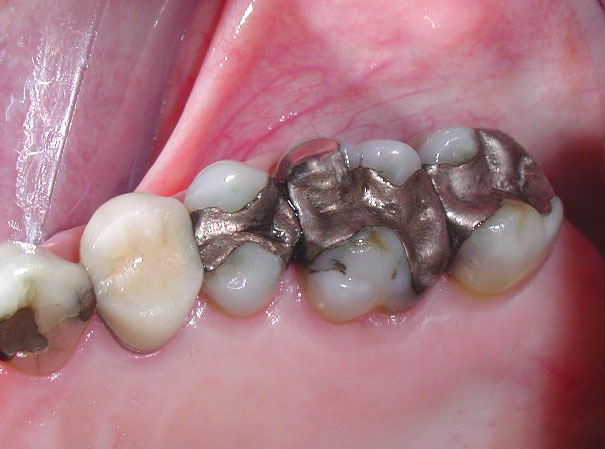
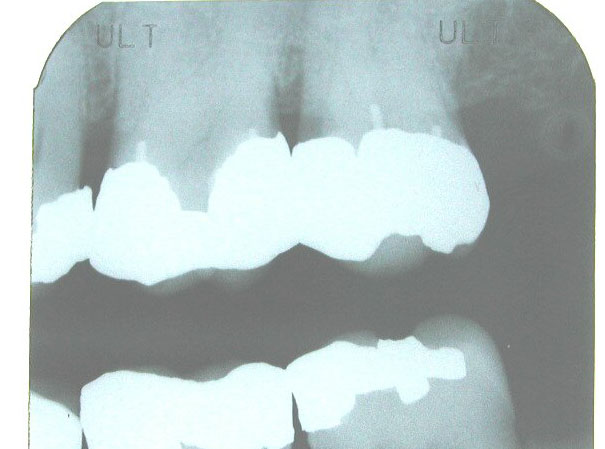
Using 2% lidocaine 1:100k epi, an Er:YAG laser(HOYA ConBio DELight) was used for closed(no flap reflected) crown lengthening. Interproximal gingiva was removed without water with a 600micron tip 30Hz 70mJ. Osseous structure was ablated with distilled water irrigant 30Hz 160mJ. An 810 nm diode laser(HOYA ConBio DioDent) was used to control hemorrhage interproximally with a non-initiated fiber in a non-contact mode at 2Watts Continuous Wave(also used some 1:50K epi). The diode fiber was then initiated to provide gingival retraction for the remainder of the preparation at 1W CW in a contact mode.
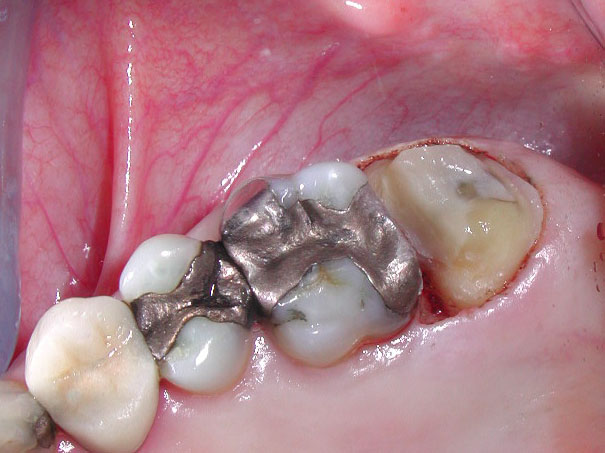
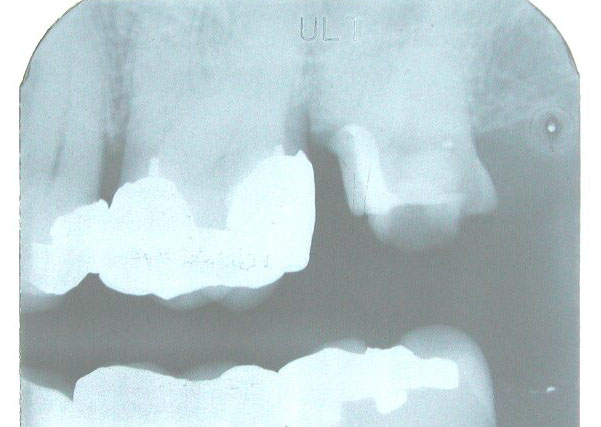
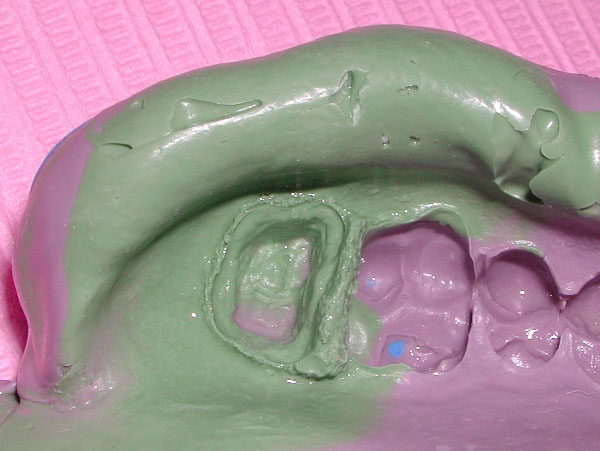
Four weeks later, the porcelain to metal crown was seated. Patient reported moderate discomfort for 48 hours after the procedure. At the cementation appointment, the area was asymptomatic.
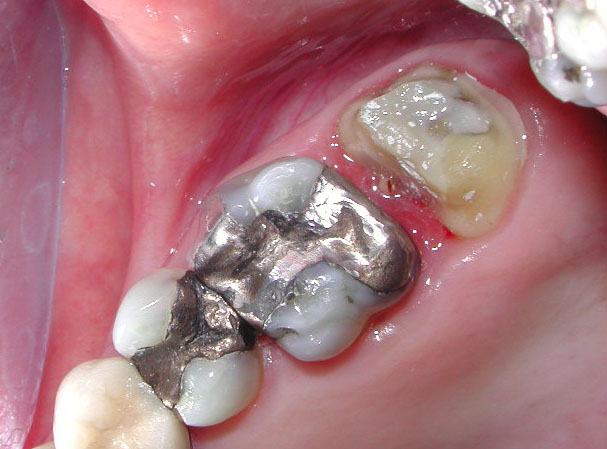
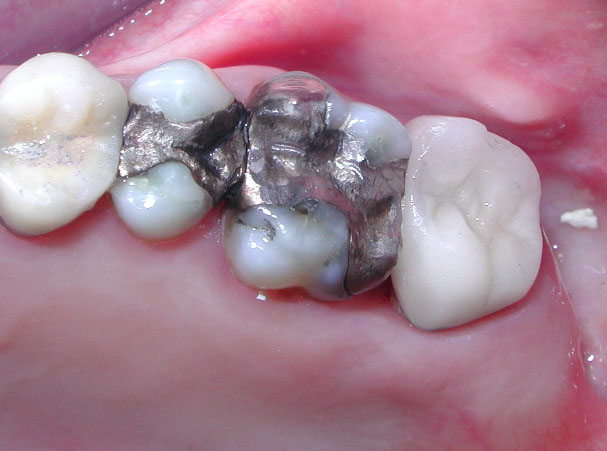
Thoughts and constructive critcism appreciated. Although an attempt was made to blend the osseous architecture mesially and distally, this is difficult without reflecting flaps.
Al
dkimmelSpectatorAl, Great photo’s. You had to use epi to control the bleeding? The diode was unable to control it in a nonfocused mode? Last week I had the same problem with the use of the diode in a nonfocuse mode. On one case it worked great on the second it was a waste of time. Not sure why!
My only concern is with the distal of #14. I would have been inclined to recontour the roots on the distal of #14 and crown it. Trying to deal with the distal furcation present.
Nice case.
DAvid
Glenn van AsSpectatorNeat Case Allen, great photos and documentation. I too find the bleeding with the osseous to be tough to control with any laser including the Argon which for me is the best clotter.
I like what you did, and think that you did a great service for the patient and to be honest with you , I did the EXACT same thing for a patient today for a core buildup which is to be crowned next week. Will show the photos ( I forgot them at work) later this week.
I like what you did and the healing looks pretty good.
I still think that this may be a better alternative than a flap but maybe with time a mini flap will be designed for the osseous and sutures placed. This will make the perio dept. much much happier I would imagine.(even if I cut the flap with the lasers)
Anyways, nice photos……You are really getting good!!
Glenn
dkimmelSpectatorGlenn , I think you have the right idea about the mini flap. We should be able to do the gingival reduction and then at the crest of the papalla make an incision. Then reflect around the prep . Do our osseous reduction and close. My problems so far have been in using the diode to make a clean thin cut ( 200 fiber would be nice instead of a 400u) and then I have not been able to weld the tissue back as well as I would like.
Al, Don’t get me wrong about my comments about #14. Wait to you see the case I am getting together to post of a closed CL gone bad. Boy did things not go my way.
DAvid
ASISpectatorHi Allen, David & Glenn,
Allen, good treatment and nice result. I also did a closed osseous reduction today and had a hard time coagulating with the Biolitec at noncontact mode.
In some situation where circumferential osseous reduction is not necessary, I have gone ahead with the gingival reduction and crown prep and impression, prior to the osseous reduction to avoid dealing with hemostasis. In your case, I might be tempted to do the same as only the mesial aspect needed osseous reduction.
Andrew
whitertthSpectatorAl , great case, excellent photos… A great service to your patient….
marc andre gagnonSpectatorgreat photos
Normally you can stop the bleeding with the diode 980 without epi.If you have that problem just use a lower setting without water.Sometimes it’s impossible to stop bleeding in a case like that with water.
Remember that you need less power for coagulation that for vaporisation of the tissue.
Kenneth LukSpectatorHi Marc,
What settings would you use to coagulate?
CW or pulse without water?
Ken
marc andre gagnonSpectatorHi Kennet,
If you want to coagulate you can do in CW if you have a lot of bleeding and if you can’t see where it come from.
If you can see the blood vessel use PULSE because you gonna use less energy to do the job.
marc andre gagnonSpectatorI forgot,you can use it with or without water depending if you use anesthesic or not.
If no anesthesic use water
If you don’t use water be sure to use lower setting
dkimmelSpectatorAlan, I am almost afraid to ask this. The water delivery on the Delight vs. the waterlase is different. The question is : In a confined area like subgingival in a closed flap CL do you find one laser to have and advantage over the other in delivering water to the site?
David
SwpmnSpectatorDave:
You afraid of starting another p$$ing(water spray) contest? 😉
In my clinical experience, it appears that the delivery system of the DELight directs the water spray on the treatment site with greater efficiency than the delivery system of the Waterlase.
At the present time, I am aligned with the school of thought that believes the purpose of the water spray is to:
1) Cool the ablation site
2) Rinse away the products of ablationHmmm, kind of sounds familiar doesn’t it? Think I had an old Midwest drill in dental school and the water spray on that thing did the same thing:biggrin:
In a situation like my crown lengthening case, I feel this provides a clear advantage.
Al
-
AuthorPosts
